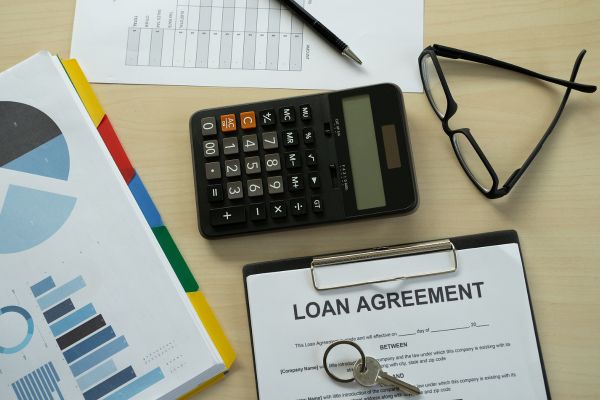
To leverage sustainability bonds or loans to be contingent on what one would like the investment to achieve. The net financial and environmental advantages are aiming for. If lacking assurance, consider such six types of sustainable debt when creating the business strategy.
6 Kinds of Sustainable Debt
1. Green Bonds
Green bonds are activity-based bonds issued to finance projects with the goal of an affirmative environmental change. Green bonds guarantee the capital is used to finance green projects.
Progressives such as renewable energy efficiency, clean public transportation, as well as pollution prevention. To all qualify for green bonds, as they focus on enhancing climate conditions or sustainable energy.
Although green bond issuance doesn’t yet have a market standard, financers refer to the Climate Bond Standard and Certification as well as Green Bond Principles. Sustainable debt investors must be aware of such guidelines when considering green projects, as these bonds make up approximately 46 percent of sustainable debt in the novel market. One can avail a short term personal loan for increasing growth and prosperity.

2. Green Loans
Green loans are performance driven loans that operate alike to green bonds, however with one exception: They usually exist within the private market. Green loans were primarily introduced to fire up homeowners to ensure energy-saving refinements to their property, for instance installing solar panels.
Green loans are planned to prompt businesses to adopt green policies by introducing environmentally friendly services as well as products. The key sources for green loans are commercial lenders or peer-to-peer lending. Short-term personal loans are a wise decision to take for increasing business growth and improving personal situations financially.
3. Sustainability-Linked Bonds
Sustainability-linked bonds (SLBs) are taken as behavior-based bonds. Such funding is highly based on whether an issuer achieves sustainability goals by a certain deadline.
For instance, a company guaranteed to lower its carbon emissions by a definite percentage can qualify for an SLB. If it fails to lower its emissions based on the bond terms, afterwards it must pay investors more capital. Short-term personal loans are an easy solution to solve financial personal problems.
4. Sustainability-Linked Loans
Sustainability-linked loans (SLLs) are homogeneous to SLBs in that they’re behavior-based. Up till now, as they qualify as loans by preference rather than bonds, SLLs operate within the private sector as well as they couldn’t be publicly traded.
SLLs prompt businesses to easily hit sustainability targets highly based on incentives, for example an affirmative fluctuating rate of interest highly influenced by sustainability performance. To evaluate and maintain sustainability targets as well as to keep the rates of interest down making sure a company’s capital prolifically elevates and offering a steady flow of cash for numerous investors.
5. Sustainability Bonds
Sustainability bonds are performance-based bonds highly intended to finance. Also, to refinance a combination of green as well as social projects. Some of these projects must be efficiently aligned with the core principles of the international money market association. ICMA guidelines facilitate access to the similar standards such as the Social Bond Principles (SBP) and also the GBP.
6. Social Bonds
Social bonds are performance-based and focused on finance or refinance projects targeting affirmative social outcomes, for instance affordable housing, LGBTQ+ rights, as well as education equity.
As with green bond issuance, social bonds particularly on guidelines offered by the SBP. Such guidelines equip investors with the advanced knowledge as well as insight to assess investments’ risks and desired outcomes.
According to Pacific Investment Management Company also abbreviated as PIMCO, social bonds during the COVID-19 pandemic have facilitated their impact on low-income communities.
The Problem of Impact Washing
As sustainable debt investing has crystal clear social as well as environmental benefits, such a growing market has easily led to the leap up of a phenomenon called impact washing.
Impact washing is the process of application to embellish or decorate a particular investment’s affirmative impact. Without following laws as well as the proper regulation for sustainable investments, certain bond issuers or numerous fund managers exploit such trends by declaring assets, stocks, or bonds as green without ensuring backing up claims or guaranteeing the outcome.
Impact washing isn’t always done with malicious intent. As a company tends to fail to measure its sustainability impact correctly, it can inadvertently mislead investors regarding such an environmental as well as impacts socially.
To be the best, impact washing is taken to be careless; however at its worst, it’s unethical. Thus, a wise investment in sustainable debt essentially needs fully understanding relevant to the market guidelines.
Green Bond Certification
One way to avoid the looming specter of impact washing is by identifying investments with the Green Bond Certification.
The Climate Bond Standard and Certification is a general framework utilized to guarantee such a project’s involvement in sustainable debt funding heeding by the criteria laid out in the 2016 Paris Agreement. Such a certification is the bond equivalent of the completely fair trade consumer label globally acknowledged by bond issuers. It’s a quick, efficient and accessible way for investors to vary legitimate green bonds from those guilty of impact washing, offering peace of mind such that their investments make an affirmative impact.



